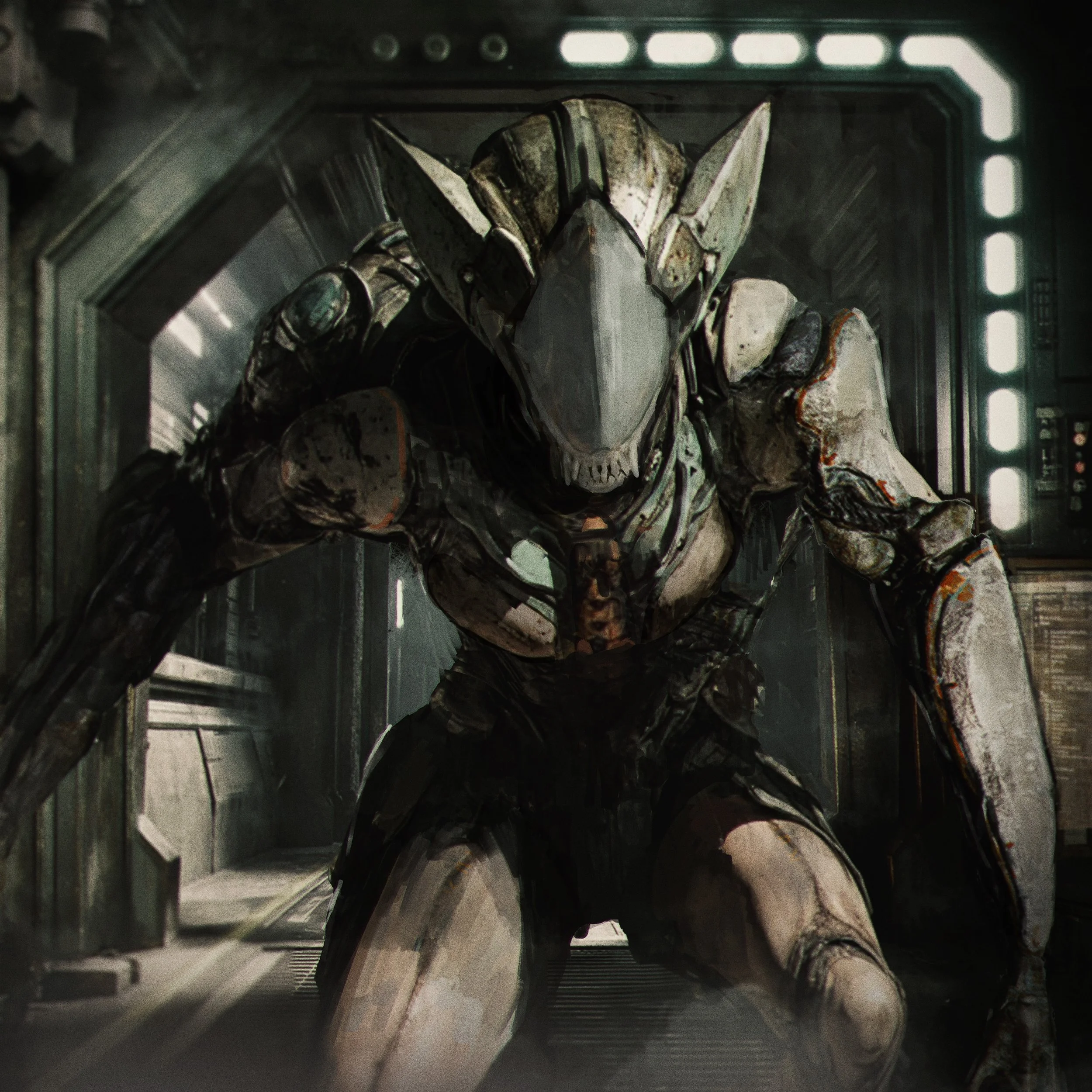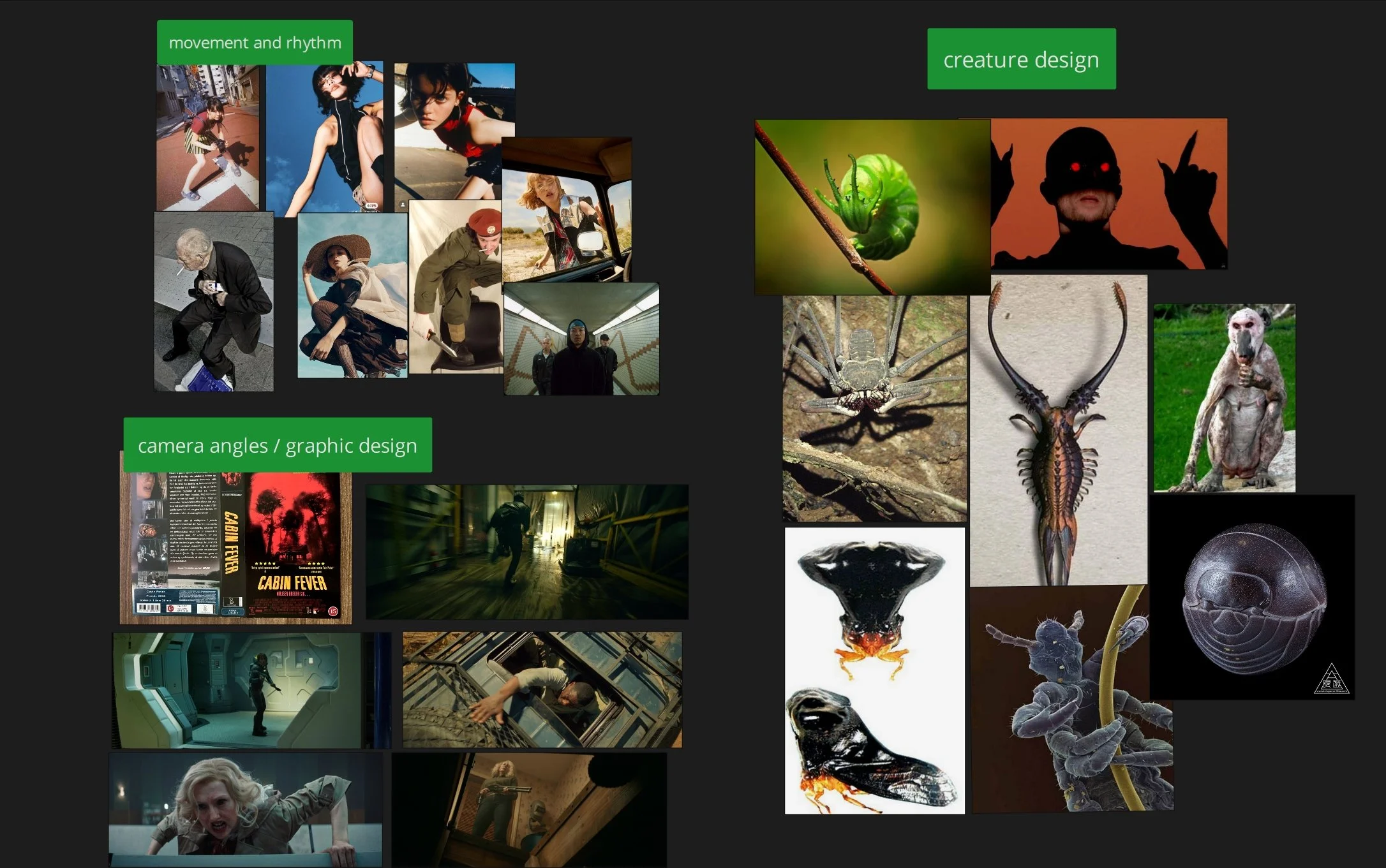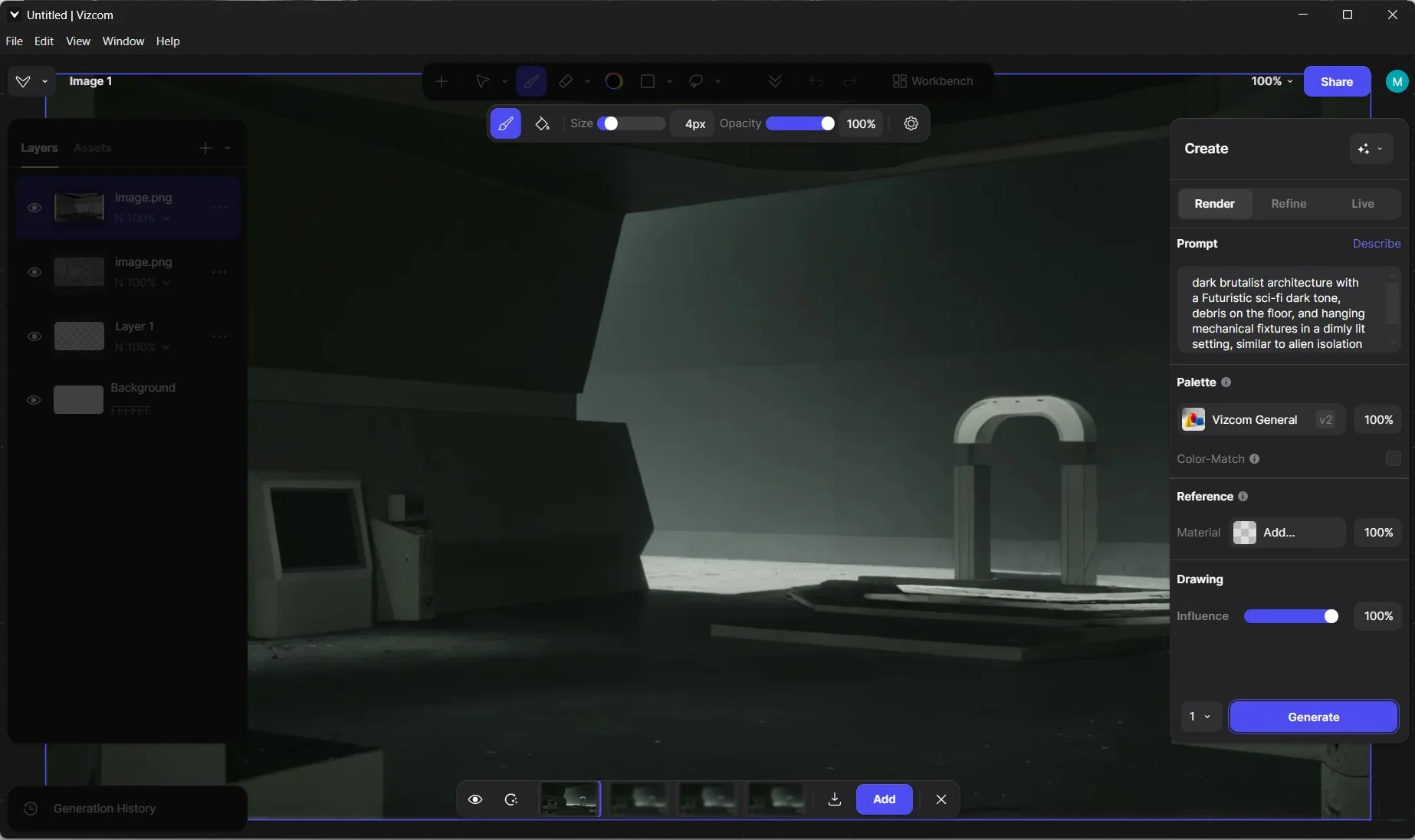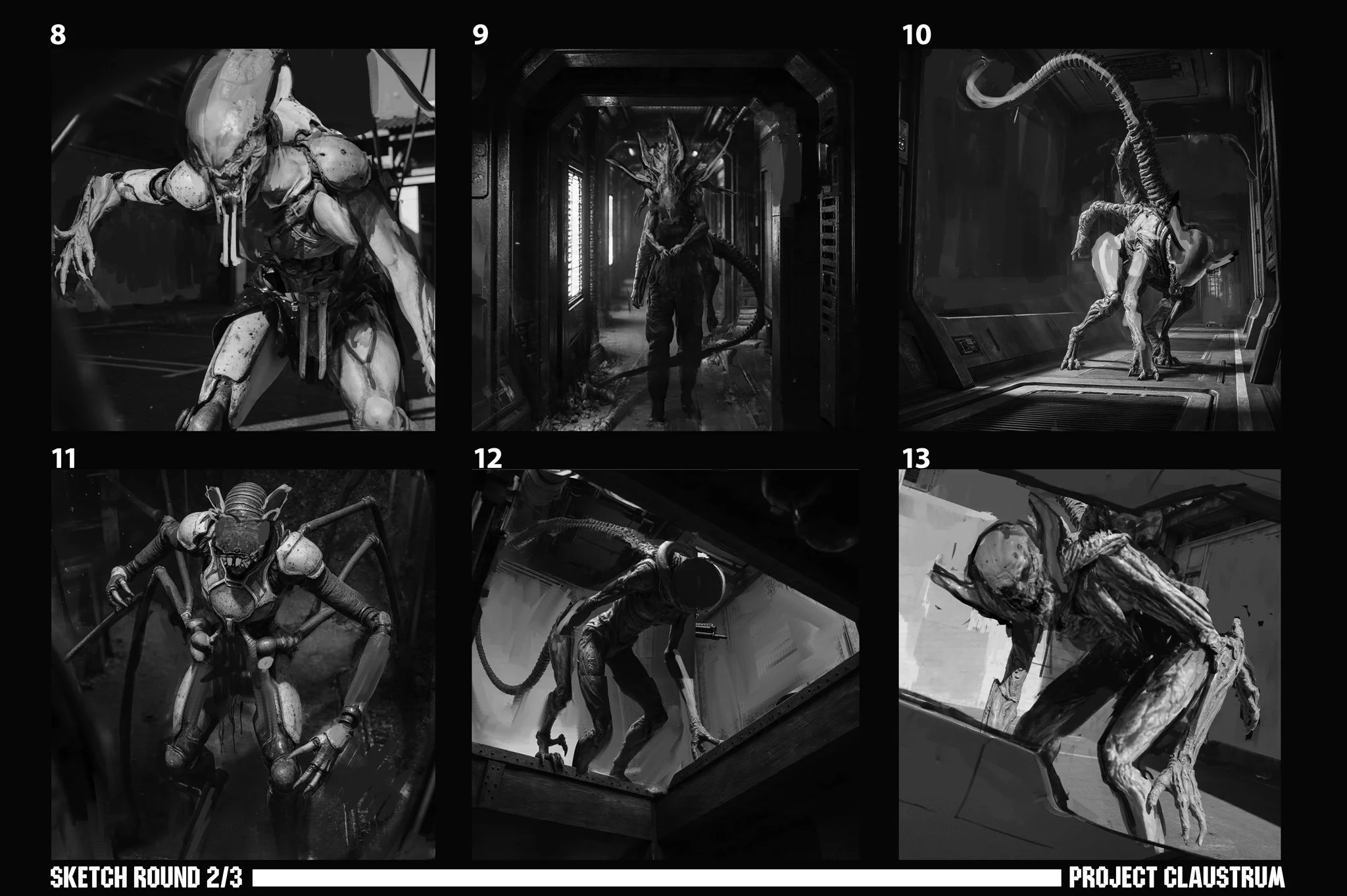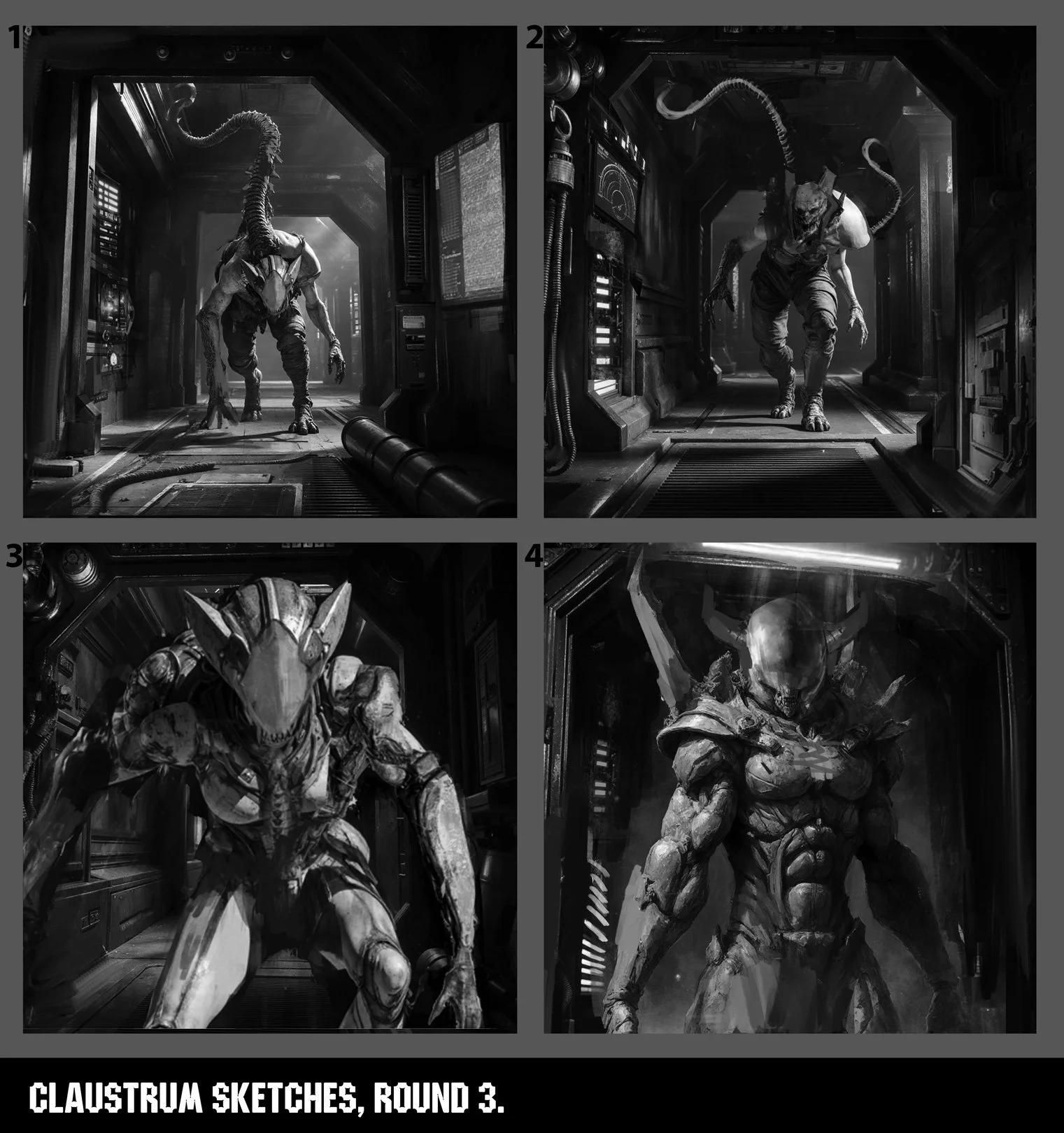Creating Marketing Art that Defines Entire Projects
Synopsis
-
Typhon Games reached out with a challenge: Can we create cover art to market their board game if we haven’t decided on what the creatures, environments, and everything will look like yet? They know what they want, they just haven’t seen it. They need a strong cover art to mock up the pitch.
We strategized a few art guides in the form of Cover Art to promote the project. The following concept art pieces would become an asset to scale their game and ensure the whole project looks cohesive; no matter how many creatures or characters they want to add later, they know what they’ll fit.
Category
-
Art Direction.
Concept Art.
Visual Development.
Marketing Art.
Style-Guides.
Defining the Project Vision while working on Marketing Art
Project Description
Typhon Games approached Menog Creative to create a library of symbols, motifs, textures, and colors, designed to convey the feelings of dread, powerlessness, and horror. They needed creature and interior designs for this.
The story of Claustrum, our project, has creatures that would be experimented on and then tested on stalking living people.
Being no stranger to horror game design and having helped Frictional Games with Amnesia Rebirth’s Visual Development, by the time we were discussing the creative mission in our first meeting, my mind was already compulsively flashing with different ideas of how to solve this challenge before we even finished our first introduction call.
Being a visual person has its perks, and as you scroll down, you’ll find the techniques I use to ensure we delivered what Typhon Games wanted, but also elevate the narrative, expand on its universe, and leave them with a series of concepts that not only look appealing to market the game, but also set the foundation to make the project look cohesive.
How We Planned Visuals that Scale Without Art Direction
If you’re not planning, you’re planning to fail.
One of the worst habits I had as a Junior Artist was to start working right away as a reaction to inspiration upon reading the creative brief from a client. Although it is a great trait to have, to be easily inspired by client projects, the client needs to be included in the process.
Because of this, I often pitch a few ideas to them before we start the actual work. This process allowed Justin from Typhon Games to flag any issues early on, check if we were misinterpreting any bullet points from the brief, and always stay on track.
Because most of my client collaborations are remote, I often use video updates to communicate.
Establishing Lighting, Mood and References
Mystery through color, tension through contrast and believability through real source material.
Typhon Games asked for the project's color and lighting to be inspired by Alien Isolation, the technology by Dead Space, and the mood by Silent Hill.
I believe in staying original and not copying other artists’ work. This isn’t about a higher moral code; I’ve found that using real-life references keeps my work fresh. Alien Isolation is a great example, but instead of just copying, we can analyze its lighting and mood to see why it works, and if it fits Claustrum.
For instance, I noticed that the industrial lighting in Alien Isolation supports the theme of space exploration. The green and cold hues build tension, and the grunge textures add a sense of grimness. However, we must remember that Alien Isolation takes place in a different world than Claustrum. Therefore, we should use these influences wisely. Instead of just looking at images from Alien Isolation, I decided to study industrial lighting, late-night moody photography, and other real-life subjects. This way, we can use similar strategies while keeping our own style true to Claustrum. We want to set trends, not chase them.
Oppression through Architecture
Very early on, Justin from Typhon Games mentioned that they reached out because they knew I worked on Amnesia Rebirth and with Frictional Games. They are fans and wanted my help to create something similar for Claustrum. For the containment unit, I used Soviet architecture, Brutalism, and Voodoo color palettes, just like I did for the Dark World Civilization in Amnesia Rebirth. It had to feel oppressive, so I focused on unexpected ideas that other designers might not consider. I thought, “What comes to mind when I think of oppression in architecture?” Soviet architecture evokes a sense of grandeur but also has a darker side. I believed it was perfect for our containment unit. The sharp angles and strong structures would convey the idea of a high-tech laboratory that has become a prison.
Innovative but Believable Science-Fiction Technology
Typhon Games admired the terminals from Dead Space. As the designer, my job was to advise against copying them directly. Instead, we aimed to understand the inspiration behind Dead Space and build on our ideas. For Claustrum, we decided on a Cold War-era look, focusing on industrial and aerospace technology for our containment Units. Since our game is set in a laboratory, we wanted it to feel unique, differentiating it from Dead Space. Dead Space had its reasons for its design; it was set on a mining ship with a specific backstory. In Claustrum, we are not mining; we are conducting experiments like biologists. Therefore, it's crucial to choose our references carefully. It wouldn’t make sense to have a harsh laboratory style for biologists if the terminals resembled a sci-fi mining facility, just because we liked them from Dead Space.
Laying out believable references like this early on allowed us to sync before we started to sketch, as well as spark new ideas we hadn’t yet considered at this stage.
Planning our Creative Brief
Breaking down our goal into smaller steps makes any big project easier to achieve. We can see how to reach our goals and prepare for what we need. This helps us with budgeting, meeting deadlines, communicating, and keeping everything organized.
“Our goal is cover art that tells a story, shows what the game is about, and draws people in.
Our milestones are:
- Show enough of the facility to explain the setting.
- Find a style that fits the facility (we mentioned Amnesia Rebirth, Doom, Dead Space). I’d like to know what you like about these so we can pull those elements into our own style. (whether it is props, lighting or something else)
- Do we want to feature a figure, like the one you have in Brightview Haunting? If you can share references of that as well, that'd be helpful.
- Final art render in the style of Awaken Realms (painterly, but realistic in lighting)
Tasks:
- Agree on all reference images before sketching.
- I’ll sketch about 3–5 options based on approved references and milestones to make sure we’re on track. I’ll need a sample of the sketch quality you want for each stage so I can match your expectations
- You get 3 rounds of revisions. If we want to explore more designs later, we’ll update the contract for that.
- Once we agree on a direction, I’ll start the final rendering and keep you updated.”
I always wait for approval on a brief before starting work. This establishes clear expectations for the client and helps us budget our timeline.
Finding Inspiration
Because we’ve planned and because I know what I’m looking to achieve now, whatever the image I stumble upon, I start to look, not at what’s there but what it could have been, and that serves the project.
This fashion photo shot from below would have been the perfect shooting angle for a creature who creeps above you while you hide on a vent, for instance, and it was what inspired the rest of the image.
Sketching Ideas is Testing Ideas
These are rough, and on purpose, I never refine sketches too much early on, because it gives both the client and me the chance to pivot, they feel included in the process, and can have a say on the direction. This doesn’t mean I do not to take responsibility for the project’s progress; it means that I respect the client’s input, because it’s their project, and ultimately, they know more about their own project than I do.
Do I often show references to my clients? Generally, I don’t show cinematography or visual development too much. I find these aspects tricky to explain unless the client is an Art Director or has a background in Art and Design theory. They are means that enhance and unify the work. However, I like to present key ideas, like creature design biology, to get client approval on the direction. While it's clear how I integrated these ideas later, I need to test concepts before I start sketching. I want to avoid getting too excited about a specific idea that might not work out. With creature design, we lay a strong biological foundation through reference that’s not too defined and has room to experiment. For instance, we know the creature will be crustacean-like, possibly with multiple limbs, but there’s still room to explore. This approach helps ensure we meet project goals and increases the likelihood of client approval. We continue to use real-life references from actual animals and organisms to inspire our creature designs.
Rendering the facility
I created a quick blockout in my 3D software to understand the space better. Then, I used Vizcom as an AI render engine to help with lighting and rendering my 3D images. Vizcom works with public domain and copyright-safe material, making it a useful tool for speeding up my black and white scenes. It mainly helped me present my work, set up lighting, and allowed me to paint and photobash the monster design. I usually use Keyshot for base renders, but this time I wanted to try something new.
"Working with Miguel on the cover art for Claustrum was a great experience. He took the atmosphere I envisioned—dark, brutalist, and full of tension—and elevated it with an awesome main creature design. His creative process was collaborative yet deeply original, allowing him to capture the exact mood of the game while adding his own signature artistry. The final piece doesn’t just serve as a cover; it tells a story and sets the tone for everything players will feel when they open the box. I can't wait to see how he expands on the art as the game develops over time."
— Justin Gale, Typhon Games.
Our Project results:
No revisions. Our collaborative process allowed us to experiment while keeping the project on track, resulting in no need for extensive revisions and changes.
A cover art approved for marketing campaigns on the first try.
Art that can be used as style-guide to scale future assets, whatever we are to add or remove or adapt to the project, we now have solid research to make future decisions, no longer we’ll think whether adding this or removing that will make sense, by establishing the visual foundation for our story, we know the ingredients that future characters or environments need to have to make the project cohesive.
Thanks for being here.
If you need help on a project like this, let me know by emailing me here.

